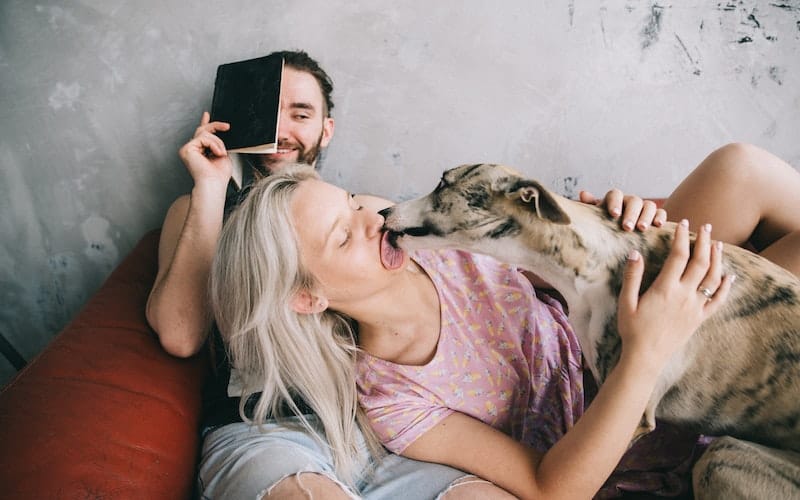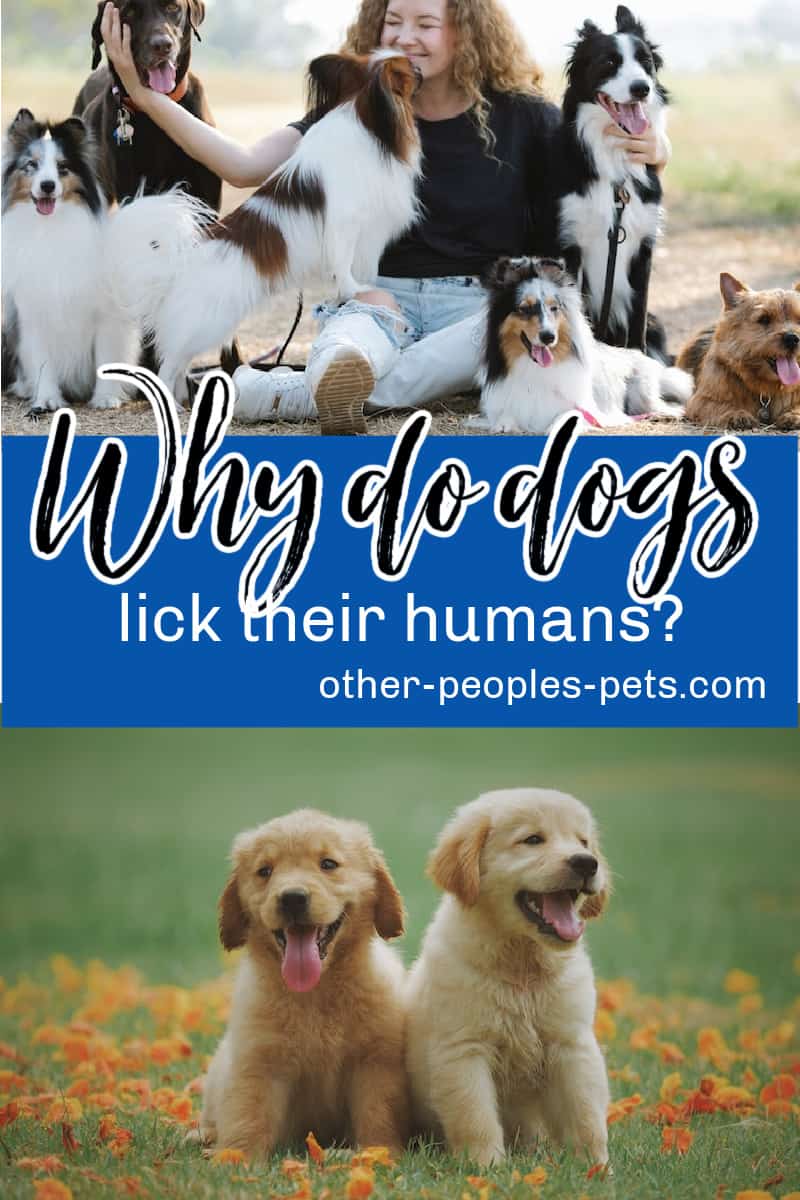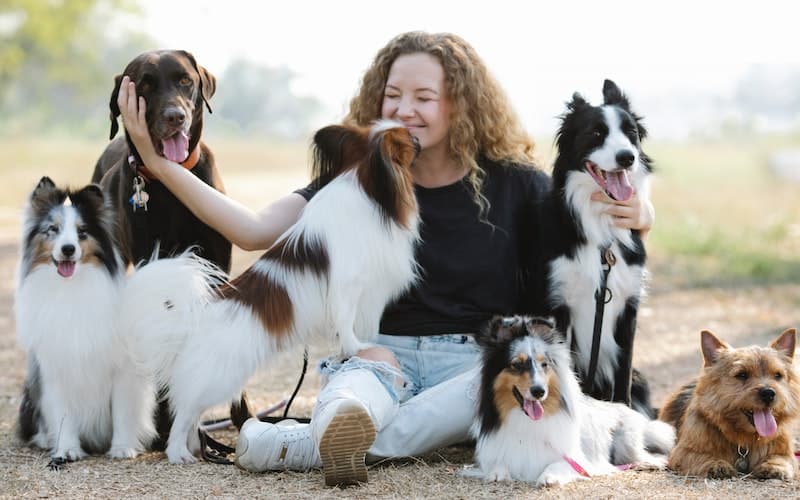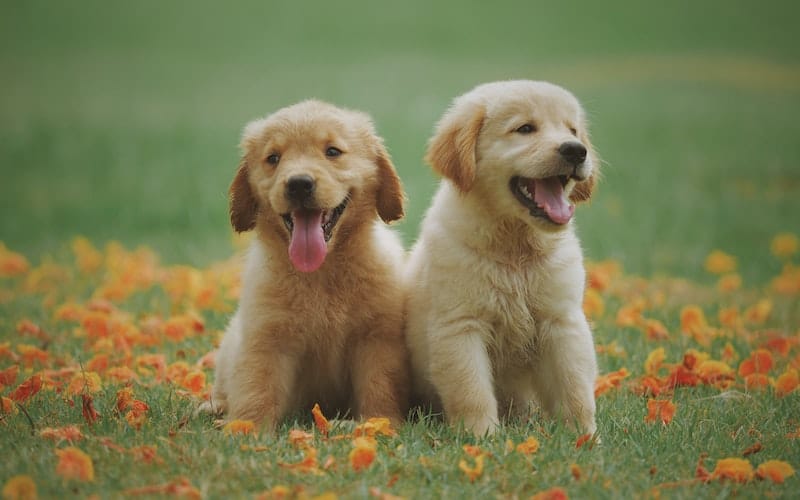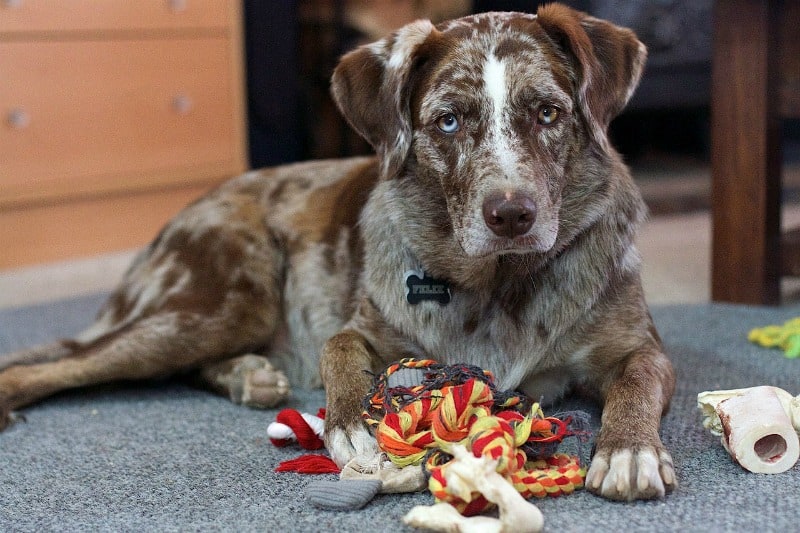Last Updated on October 25, 2023 by ellen
Why do dogs give kisses? Find out more about dog kisses and how to get your dog to stop licking your face with these tips.
Posts may be sponsored. This post contains affiliate links, which means I will make a commission at no extra cost to you should you click through and make a purchase. As an Amazon Associate I earn from qualifying purchases.
Table of Contents
Why Do Dogs Give Kisses?
Dog kisses are usually a sign of affection. Your dogs may lick your face to show affection because licking releases endorphins.
Dog kisses, also known as dog licks, seem simple but they are, in fact, complex. Dogs cannot express their love and affection in the same way humans do. So, they often resort to their instinctive behaviors such as licking or ‘kissing’. This behavior is deeply rooted in their biology and survival instincts.
When a dog licks a person, it can be interpreted as an act of submission or a way to seek attention. It’s their way of bonding and communicating. They might also use licking to explore the world around them.
Dogs have an incredible sense of taste and smell, and licking helps them understand their environment. So, when they lick you, it’s like they are getting to know you better.
Did you ever wondered why are dogs noses always wet?
Are dog licks dog kisses?
Yes, in a way, dog licks can be considered dog kisses. When dogs lick you, they are showing affection and trying to strengthen their bond with you. It’s their way of expressing love and care.
However, excessive licking can sometimes be a sign of anxiety or other issues, so it’s important to observe your dog’s behavior closely.
How to know if dog kisses is a sign of affection
To determine if your dog’s kisses are a sign of affection, observe the context and accompanying behaviors. When your dog licks you, do they seem relaxed and content, with a wagging tail and relaxed body language? If so, it’s likely a sign they care about you.
However, if the licking is accompanied by signs of stress or anxiety, such as excessive panting, whining, or body stiffness, it might indicate a deeper issue. Simple tips to encourage or discourage dog kisses include positive reinforcement for desired behavior, distraction with toys or treats, and establishing clear boundaries and commands such as ‘no lick’. Remember, consistency and patience are key when retraining any dog behavior.
Why does my dog kiss my mouth so much?
Dogs often aim for the mouth when giving kisses because of the smell of food or the taste of skin. This behavior can also be traced back to their puppyhood. Puppies lick around their mother’s mouth as a way to beg for food or to show submission.
When dogs lick your mouth excessively, it could be a sign of affection, a way for them to explore their environment, or even a learned behavior for getting your attention. It’s important to monitor this behavior and adjust it, if necessary, especially considering hygiene and health issues.
You taste good!
Dogs can be attracted to the taste of human skin due to its salty flavor. The remnants of food, the scent of you, or a variety of other factors can make licking an enjoyable experience for dogs. If licking becomes excessive, it might be necessary to consider behavioral training or a check-up with the vet to rule out any health issues.
Your dog wants your attention
Sometimes dogs might lick or ‘kiss’ simply because they want your attention. This could be a sign that they’re bored and need stimulation, or it could be their way of reminding you that they’re there and they want to be included in what you’re doing.
So, why do dogs give kisses? If your dog tends to kiss you when you’re busy doing something, they’re likely seeking your attention. It’s essential to understand this behavior and respond appropriately, either by spending some quality time with your dog or providing them with engaging toys or activities.
Do dogs know when I kiss them?
Dogs might not fully understand the human concept of kissing, but they do associate the action with positive feelings and attention. This is why they often seem to enjoy it when we give them kisses. If your dog seems to enjoy being kissed by you, it’s perfectly fine to show your affection in this way. However, always remember to respect their comfort and boundaries.
Why do dogs lick other animals?
Dogs also lick other dogs as a form of communication or exploration. Similar to licking humans, when dogs lick other animals it can be a sign of affection, or submissive behavior, or they may simply be trying to gather information about the other animal. However, it’s important to remember that not all animals interpret licking the same way dogs do, and this can sometimes cause confusion or conflict.
How to get your dog to stop licking
If you want your dog to stop licking or ‘kissing’ you excessively, there are a few simple tips you can employ. Firstly, consider using a distraction. This could be a toy, a treat, or even a command to engage them in a different activity.
Secondly, be consistent with your response when dealing with dog licking. When your dog starts licking, gently redirect them every time so they understand that it’s not an encouraged behavior.
Lastly, consider teaching them a ‘no lick’ command. Positive reinforcement, such as treats or praise when they obey the command, can be very effective. As always, patience and consistency is key when changing your dog’s behavior.
This product presentation was made with AAWP plugin.
Signs dog licking is a compulsive behavior
Compulsive licking in dogs can manifest in several ways such as excessive licking of objects, air, or themselves. Key signs of this behavior include continuous licking beyond a casual grooming routine, skin irritation or infections due to over-licking, and a tendency to ignore other activities or interactions in favor of licking.
It’s essential to consult a veterinary professional if your dog exhibits these symptoms, as this could indicate underlying issues like anxiety or health problems.
If you think your dogs lick might be due to prolonged stress or an obsessive compulsive disorder, ask a veterinary behaviorist or veterinarian. A dog trainer may be able to help.
Distract them with a toy to chew on
Chewing toys can be an effective method to distract your dog from excessive licking. A rubber dog chew or a teething bone are great options. These items provide an outlet for your dog’s instinct to chew and can also help keep their teeth clean.
Use simple words such as “chew toy” or “bone” when giving these items to your dog, this will help them associate the words with the object. Make sure you, always supervise your pet while they’re using a chew toy to prevent any possible choking hazard.
Do dogs mouths have germs?
Yes, like all animals, a dog’s mouth harbors natural bacteria, some of which can be harmful to humans. However, it’s important to note that the likelihood of these bacteria causing a problem is generally low, especially if both the dog and human have healthy immune systems.
Regular veterinary care and oral hygiene practices for your dog can help keep these bacteria in check. When engaging in close interactions with your pet, remember to wash your hands and avoid direct contact with wounds or open sores to limit potential exposure to harmful bacteria.
Conclusion
So, why do dogs give kisses? A dog’s slobbery kisses are more than just a wet, messy affair. They are a part of their communication, a sign they are seeking attention, and a gesture showing how much your dog loves you. The behavior of licking or ‘kissing’ is deeply encoded in their instincts, and while it can get excessive at times, the right response can help modify this behavior.
Using simple words, consistency, and gentle redirection can do wonders in training your furry friend. After all, our dogs are a part of the family, and understanding their unique ways of expressing love only strengthens that bond.
Curious for more? Read why does my dog lay on top of me.

Ellen runs a small pet sitting business in southern Vermont. She has experience with a variety of small animals, dogs and cats. She has also cared for ducks, chickens and rabbits. Combined, she has over 20 years of experience in pet care and pet sitting.
